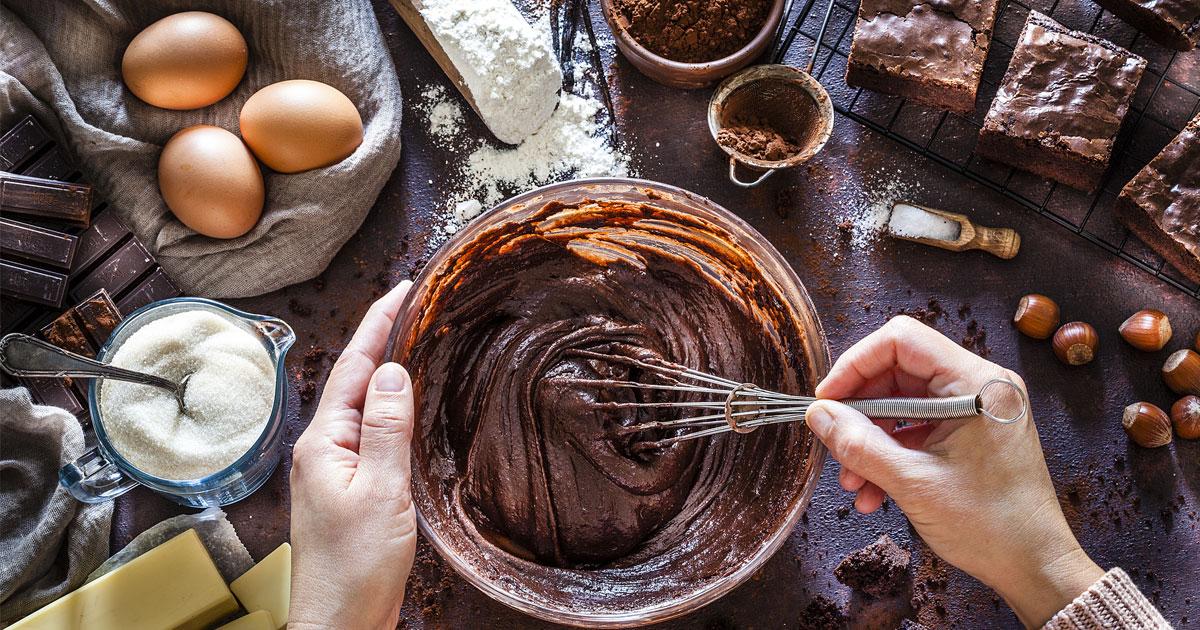 Photo from Getty Images
Photo from Getty Images
Originally Posted On: https://zenleafdispensaries.com/blog/making-edibles/
Purchasing pre-made edibles is a simple, delicious way to enjoy cannabis. While there are a host of tasty products available on the shelves of your local dispensary, what you may not realize is that you can create edibles in the comfort of your own home for complete customization of flavors and even dosing. Whether you love to cook or simply enjoy experimenting in the kitchen, try your hand at some edible recipes to mix up your routine.
Making edibles isn’t overly complicated, so even if you aren’t an avid chef, you can still make your own. To ensure a smooth and enjoyable experience, we’ve gathered our tried-and-true pointers and tips. Follow these suggestions for making cannabis edibles at home and you’ll be high on your own supply in no time.
Selecting the Perfect Strain
Before you begin to make cannabis edibles at home, you should select the strain of cannabis you want to use.
In simplest terms, cannabis cultivars – often referred to as strains – have been specifically bred from parent plants to create new cultivars with specific effects. Sativa-dominant strains may be described as uplifting or invigorating, while indica-forward strains are typically described as sedating or relaxing. Choose flower or extracts from a cultivar that best meets your cannabis needs.
You may already know what your favorite cannabis strains are, but if not, take some time to find out. That way, you don’t end up with edibles that aren’t effective because the strain you used doesn’t produce your preferred effects. Reviews are always a great place to start, but remember, strains affect each person differently.
What Forms of Cannabis Can You Add to Butter?
Creating cannabutter is one of the most popular ways to make edibles, as you can use cannabutter to make baked goods, sauces, spreads, or even toss it with snacks like popcorn and wings. Nearly any recipe that calls for butter can be transformed into a cannabis edible recipe by using cannabutter. You can add a variety of different forms of cannabis to butter, each with its own unique outcome. Three of the most popular options include decarbed flower, hash, and RSO concentrate.
Decarbed Flower
Decarbing your cannabis flower is essential if you want to create cannabis edibles. Decarboxylation of your cannabis flower is a relatively simple process and is necessary to activate cannabinoids like THC to ensure they’ll have the desired effects on your body. Without decarbing, most of the THC will remain as its non-psychoactive precursor, THCa, meaning you’ll have less effects.
To decarb flower, you’ll need to break it up into uniform pieces, spread it on a baking sheet, and bake it at a low temperature to preserve the terpenes. Most recipes call for no higher than 250 degrees Fahrenheit for about 30 minutes. Once decarbed, you can melt your butter at a low temperature, simmer it with the decarbed flower, and strain.
Hash
Using Hash to Make Edibles
Hash is a cannabis extract that features the resinous glands, or trichomes, that cover the plant’s surface. These trichomes are a densely concentrated source of THC, CBD, and other cannabinoids. Created by using ice water extraction to remove the trichomes and light heat and pressure to isolate the desired cannabinoids and terpenes, hash usually comes in a compressed putty-like brick that is dark green or even brown in color. It can sometimes have a golden hue.
One of the benefits of cooking with hash is that dosing is slightly more accurate than with decarbed flower because the isolated extract is easier to evenly distribute THC throughout the base. It is also enjoyed for its strong earthy flavor with the grassy taste of flower.
Whether you decide to make hash cannabutter, hash does need to be decarbed to become potent. The process is nearly identical to that of flower – simply spread the hash on a parchment-lined baking sheet and bake at under 250 degrees for about 30 minutes. Then, you can create butter much as you would with decarbed cannabis flower. Keep in mind: hash typically contains about twice the amount of THC as flower. Thus, whether you’re incorporating hash into cannabutter or oil or stirring it into food, you’ll need about half as much.
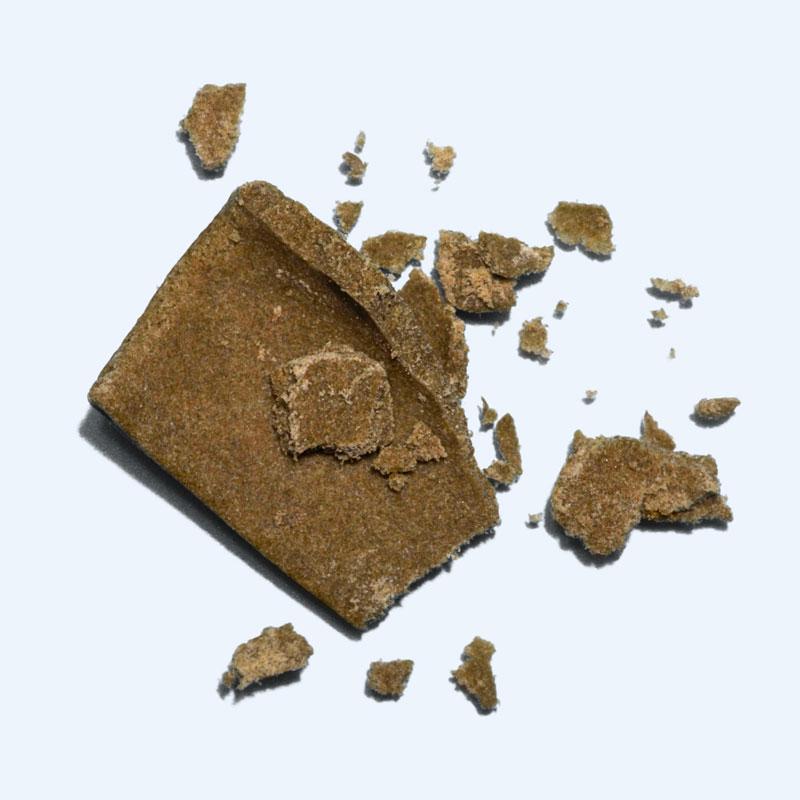

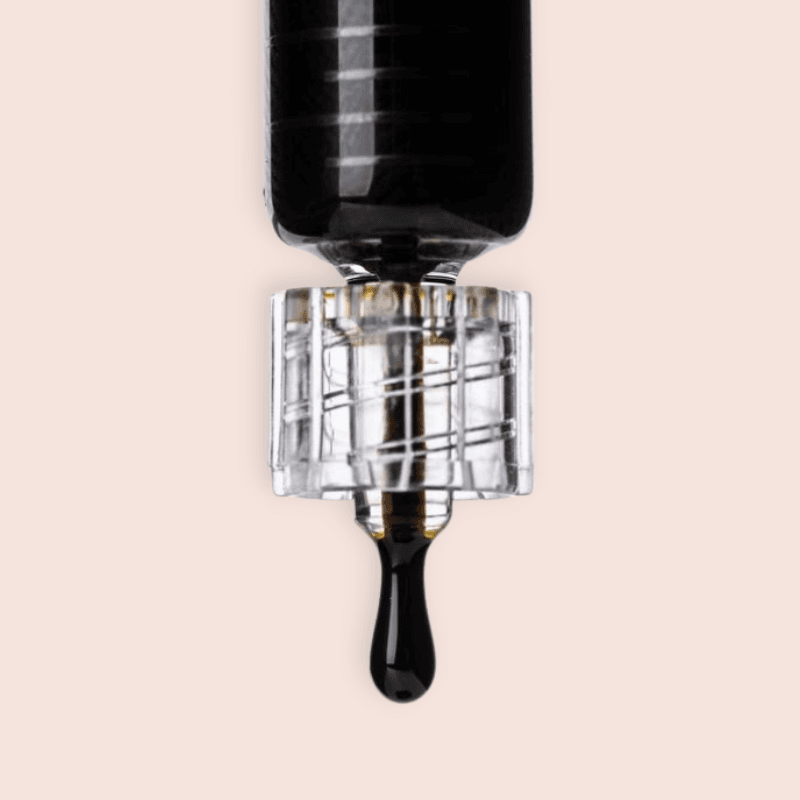

RSO
Rick Simpson Oil, or RSO, is a viscous cannabis oil densely comprised of phytocannabinoids, including THC and CBD. It is popular among cannabis enthusiasts because it uses the whole plant to create the extract, preserving cannabis terpenes, flavonoids, and even lipids to result in a potent oil. RSO can be used in a variety of ways, including orally, topically, and sublingually, but it can also be used to cook with.
One advantage to cooking with RSO is that it does not need to be decarbed since all the cannabinoid compounds are already activated. You can heat RSO at higher temperatures than flower or hash and lose less potency because it is so highly concentrated. To create RSO butter, heat a stick of butter in a double boiler over low heat, then stir in your RSO for about three minutes, stirring to ensure an even distribution of cannabinoids.
How to Make Cannaoil
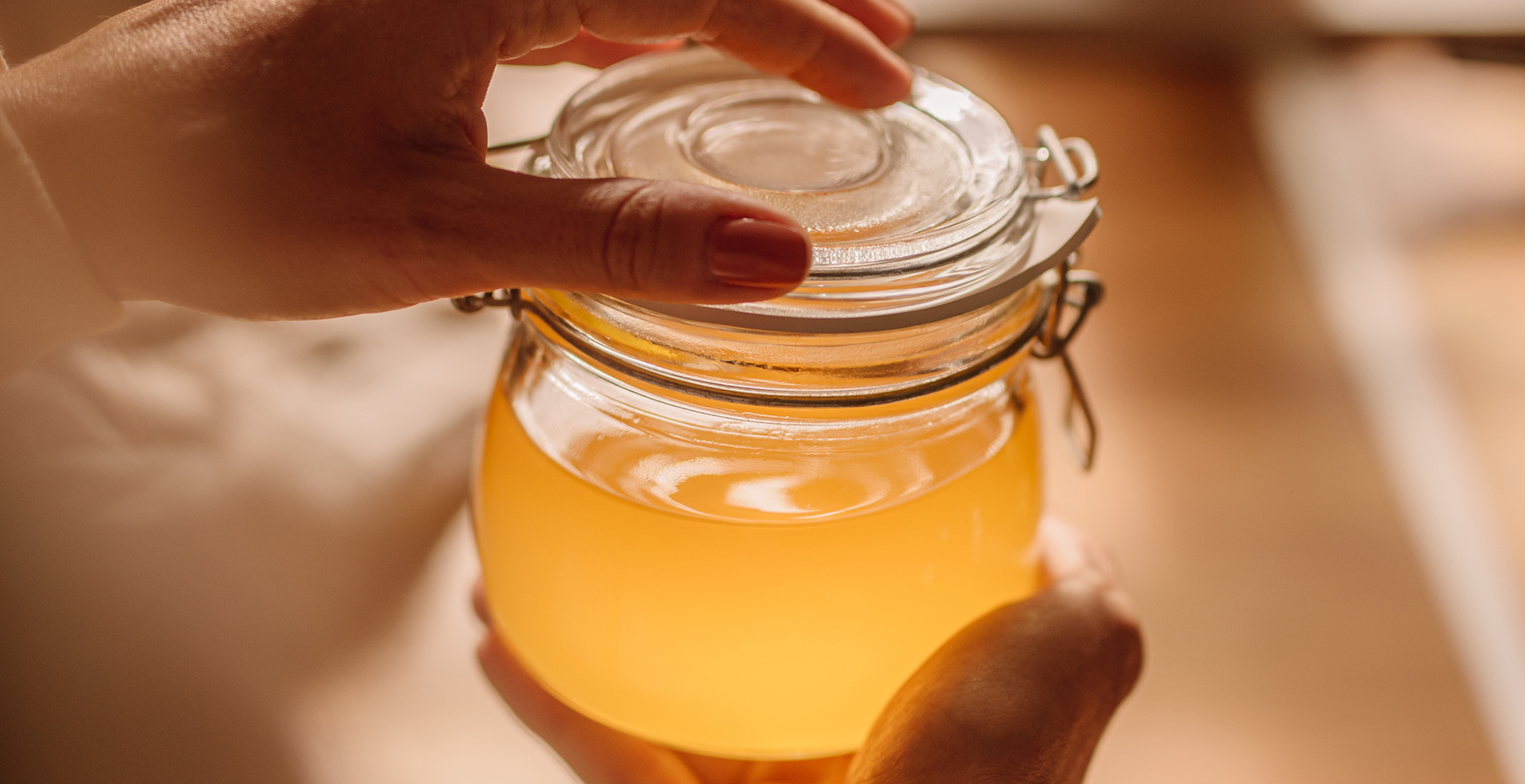 Photo from Getty Images
Photo from Getty Images
Prep Time: 2.5 HoursYield 1 CupOf course, butter is not the only fat used in cooking. You can just as easily infuse your favorite oil with all the above forms of cannabis to create cannaoil. Then, just swap out the oil in any recipe for your quality, homemade cannaoil to create custom edibles. Here’s how to do it.
Ingredients
- 7 g decarbed flower OR 3.5 g hash OR 3.5 to 4 g RSO (or more, depending on the dose you desire)
- 1 c high-quality coconut or olive oil
Directions
- Combine oil and cannabis derivatives into a heat-safe glass jar such as a heat-rated Mason jar.
- Place the jar into a pot of room-temperature water. The water in the pot should surround the jar with the water line just above the oil line.
- So as not to break the glass, slowly bring the water to a boil. Boil on medium heat, uncovered (both the pot and the jar), for two hours while monitoring closely.
- As the water level boils off, refill to maintain the water line just above the oil line.
- Turn the heat off and let the mixture cool a bit before straining it through cheesecloth into a dark-walled glass container and seal tightly with a lid.
The Cannahoney Conundrum
Of course, butter and oils aren’t ideal for every edible situation. There are plenty of things you wouldn’t add fats to, including many drinks, fruits, and other water-soluble foods. An ideal solution for sweet and savory food and drink alike is cannabis honey.
However, there are a few things to discuss regarding making cannabis honey before you get started. First, there are many different opinions on how to make cannabis honey. This is because there are no fats in honey for the THC to bond to, and solutions for creating a potent, infused honey are wide-ranging.
For example, some feel that using flower produces a weaker effect, especially if you want to strain your infused honey through cheesecloth. The straining process may remove too much of the THC because it stays attached to the plant particles as there is no fat for them to adhere to. These particles are discarded in the straining process. It is perfectly fine to do it this way if you prefer a mild cannahoney. Alternatively, you can just skip straining the honey, but it will retain the particles of the flower. If you opt to do this, try using kief, or make sure your flower is ground finely.
Another alternative is to use RSO or distillate instead. These concentrated versions of the cannabis plant require no straining, making it a more potent and easy infusion option.
How to Make Canahoney with Decarbed Flower or Cannabis Concentrate
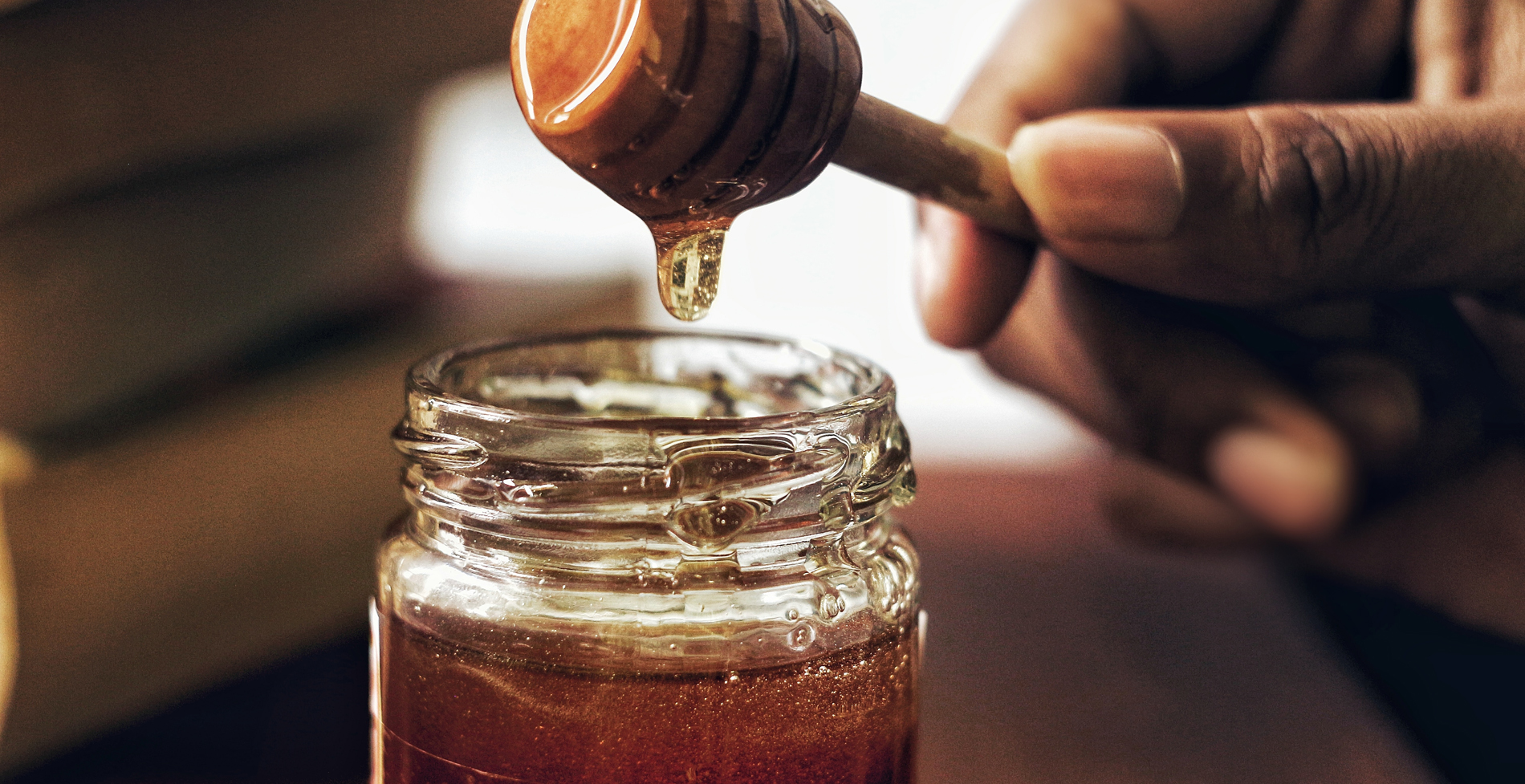 Prep Time: 20 MinutesYield 2 CupsThe choice of whether to use cannabis flower or concentrates to create your cannahoney will depend on your opinion regarding the cannahoney conundrum described above. If you do not want the flower particles in your finished product, but you want a stronger cannabis honey that retains its natural benefits, it is recommended you use RSO.
Prep Time: 20 MinutesYield 2 CupsThe choice of whether to use cannabis flower or concentrates to create your cannahoney will depend on your opinion regarding the cannahoney conundrum described above. If you do not want the flower particles in your finished product, but you want a stronger cannabis honey that retains its natural benefits, it is recommended you use RSO.
Ingredients
- 2 c your choice of honey
- 7 g finely ground decarbed flower OR 2 mL RSO (or other desired dose)
Directions
- Prep a double boiler using two pans. Boil around two cups of water in the bottom pan on high heat.
- Turn the heat off and add another pan on top of the pan with the boiling water. Add the honey to the top pan.
- Once the honey warms up and thins out to a more liquid state, add the cannabis flower or the concentrate to the warmed honey and whisk well for a few minutes.
- Finally, pour your honey into an airtight container to store in a cool, dry place for up to six months.
- To ensure consistent dosing, make sure you stir the honey very well before every use because some separation will occur.
How Much is Too Much?
Cooking with the different forms of cannabis will require different ways to estimate potency. A good starting point when learning how to make cannabis edibles is to infuse oil or butter with one gram of RSO per ounce of your desired fat, while 7 grams of decarbed flower per one cup of fat is the recommended starting point for flower. Hash is typically more potent than flower, so you should start with about half as much.
Take notes on how much you used, so you won’t forget the next time you cook. If necessary, you can adjust your next batch to increase or reduce the amount of cannabis product you include in your butter, oil, or honey, or how much cannabutter, cannaoil, or cannahoney you use in your recipe. Keep in mind that starting too low is better than starting too high.
You should also note that it will take longer for your body to access the THC you eat than the THC you inhale, as it must travel through the digestive system. Ingested THC can take up to two hours to be metabolized and enter the bloodstream, and thus, it will take longer for you to feel its effects. Metabolized THC also breaks down into 11-hydroxy THC, a derivative that can enhance delta-9 THC’s effects and make them last longer. Give it time, and don’t rush to consume more because once the effects do set in, they can take up to six hours to wear off.
Edibles Cooking Calculator
Making your own edibles can seem like a complicated and time-consuming task, but our custom Edibles Cooking Calculator makes it easier.
To use this calculator accurately, you will need to know three main things:
- The amount of cannabis you are preparing in grams (remember, 28 grams equals one ounce).
- The percentage of THC present in your material (you can also input other cannabinoids here if desired).
- The number of servings your recipe is making.
With these details handy, you’re ready to get started creating delicious and properly dosed marijuana delicacies with just a few clicks!
What Can You Cook With Cannabis?
Anything you cook, you can potentially add a cannabis product to. You can add cannabutter, cannaoil, or cannahoney in place of regular fats or sweeteners and make the recipe just like you normally would. You can make soups, sauces, entrees, desserts, pastries, and any other type of recipe with cannabis.
Because THC is a highly lipid-soluble molecule, it binds to fats best. That’s why making products like oil or butter to incorporate cannabis into your recipes makes the most sense. After making a cannabis-infused butter or oil, you can add it to just about any recipe that calls for that ingredient.
What Kind of Cannabis Can You Add to Drinks?
While you can use cannaoil in anything, it’s not something most people want to put directly into tea, coffee, or refreshing water-based beverages. Oils will not mix uniformly with water-based beverages, so you’ll need to whisk vigorously before sipping. The oil or butter and your drink will separate again after a few moments.
You can steep decarbed cannabis flower to make tea, but without fat to bind to, it will be a fairly low-dose, mild, and mellow sipper. For water-based cannabis drinks, you can stir in cannahoney, water-soluble (alcohol-extracted) tinctures, or pure cannabis distillates. Alternatively, consider infusing milk, cream, or even coffee creamer with cannaoil or cannabutter for a creamy consistency.
Common Cannabis Cooking Mistakes
Trial and error are par for the course when learning to cook any new recipe, especially when learning how to make cannabis edibles at home. Still, you can avoid making some common mistakes by learning from others who have gone before you. These common cannabis cooking mistakes can be avoided by following the tips we’ve provided above:
- Skipping the decarb step, resulting in minimally effective edibles
- Making edibles that are too potent to consume
- Not considering the strain before cooking
- Not properly storing cannabis products, so they spoil too quickly
- Not properly labeling cannabis ingredients and products
- Not preparing materials and tools in advance before beginning to cook
- Overheating or cooking cannabis products and losing THC potency
DIY Cannabis Cooking FAQs
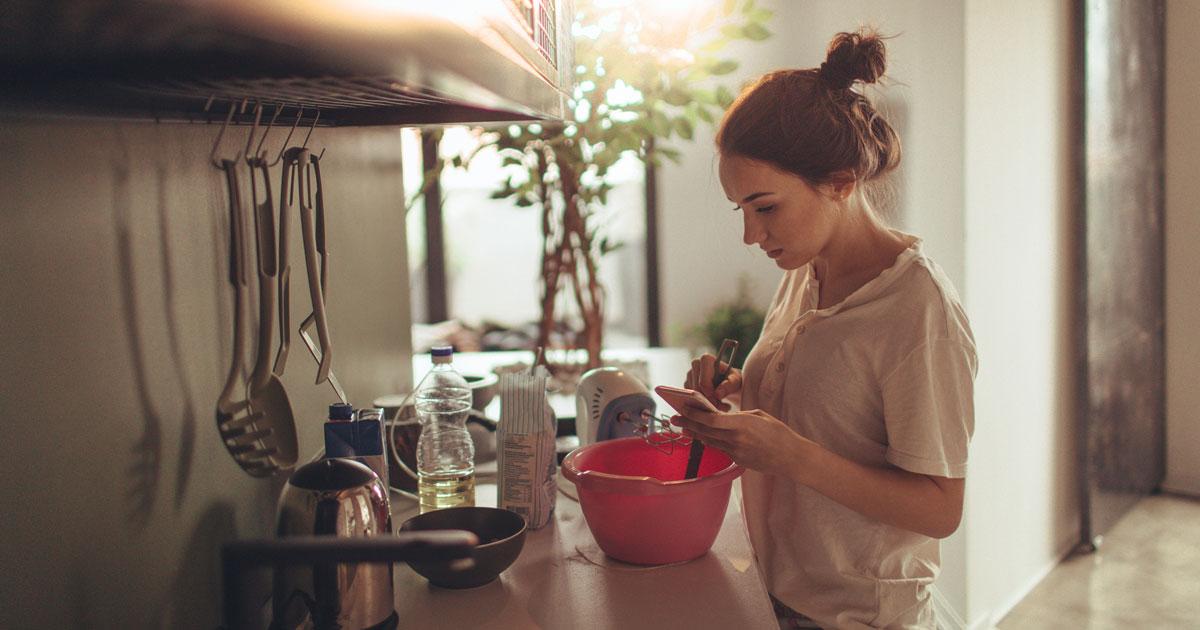 Photo from Getty Images
Photo from Getty Images 
To further help you avoid common cannabis cooking errors, consider these FAQs.
Get Started Making DIY Cannabis Edibles
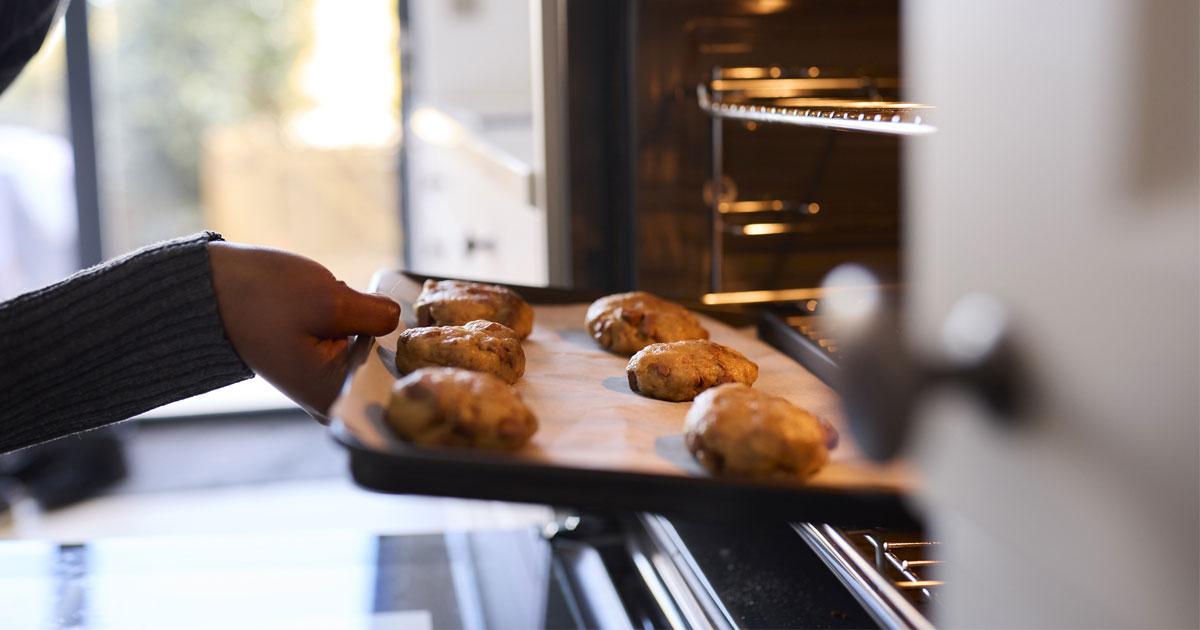 Photo from Getty Images
Photo from Getty Images 
Making your own cannabis edibles at home is a great way to customize your dosage and enjoy your very own delicious marijuana creations. And, with our handy Edibles Cooking Calculator, you can quickly create and perfect recipes for any occasion.
If you’re searching for the ideal flower strain or concentrate to cook with, visit a Zen Leaf Dispensary and ask one of our knowledgeable staff for recommendations. We’re always happy to help

